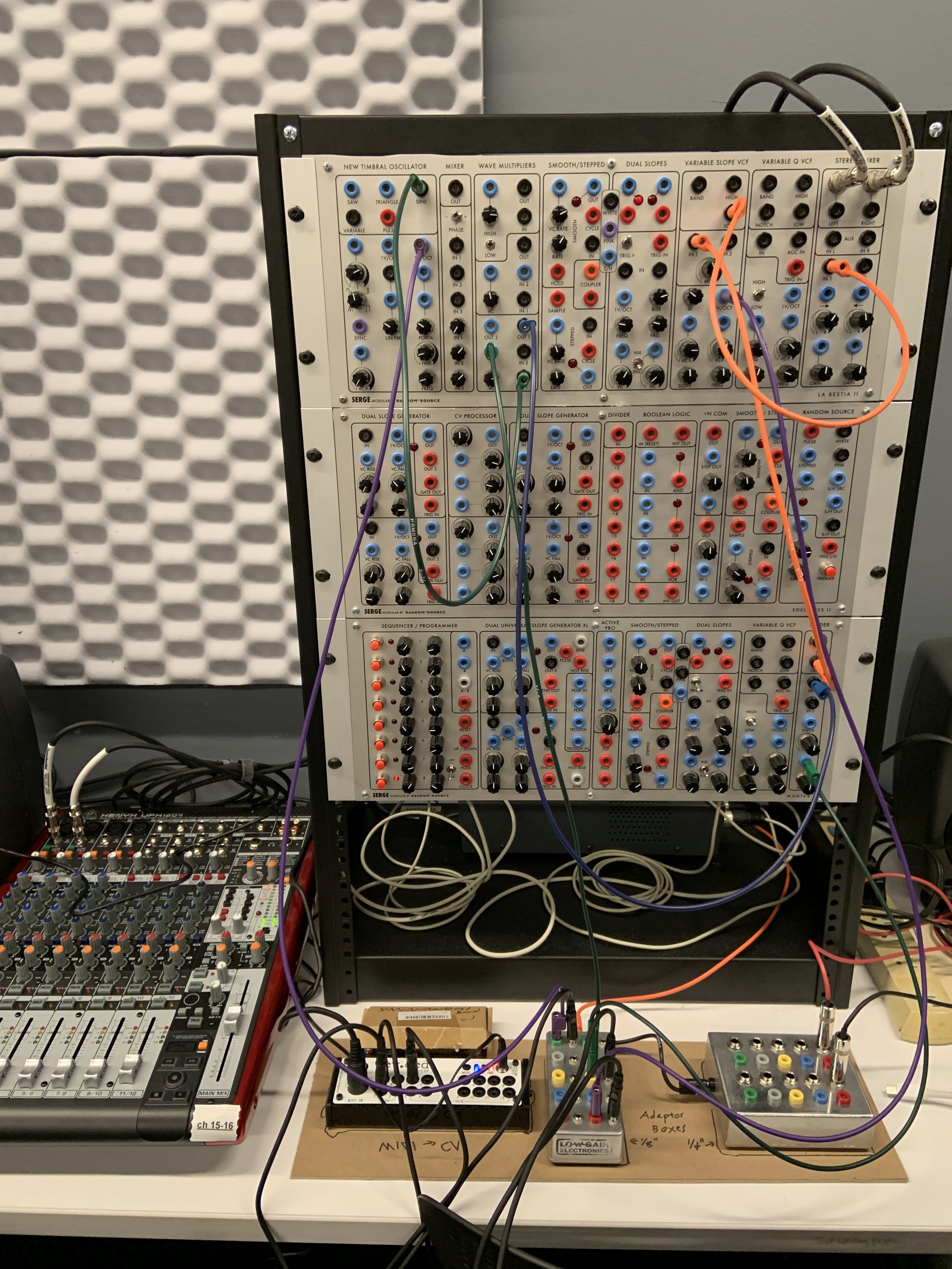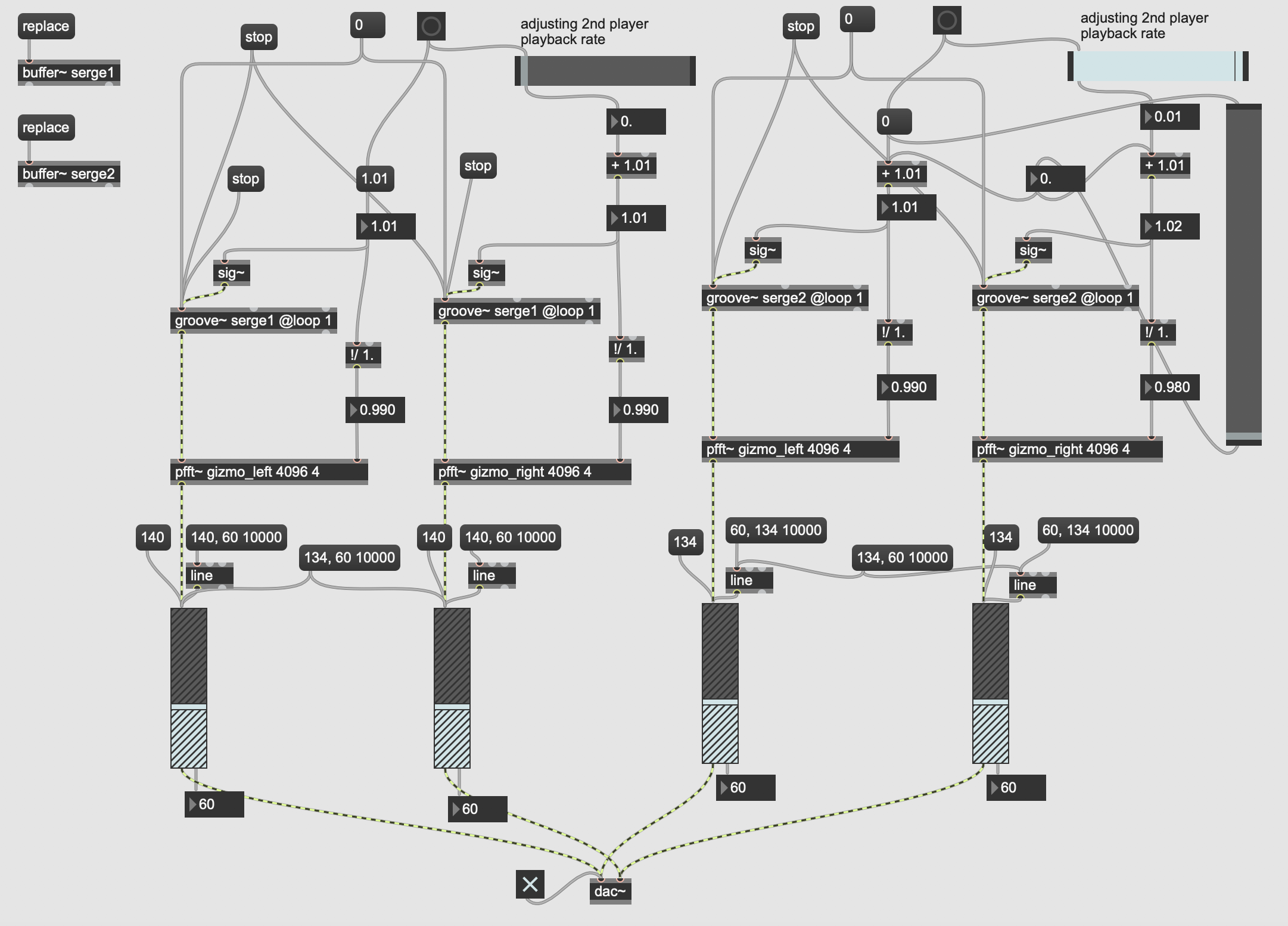I am very obsessed with process-based music and the idea that by intentionally choosing and arranging notes through pitch and time, pleasant sound with great complexity can arise from very minimal amount of musical material. I am especially interested in Steve Riech’s use of phasing technique in Piano Phase(1966), where two pianist play the same simple motif over and over but in and out of sync with each other. Therefore I would like to understand Steve Riech's phase shift more deeply by recreating the process using the same technique but different instruments and motif.
Having access to Serge modular synthesizer in another class, I decided to use Serge as my instrument and experiment with it further by sending my motif as MIDI notes to control frequency of wave generated by Serge. I created a Max patch sending MIDI note out messages to CV.OCD, a box that converts MIDI input to control voltage output, and then to Serge’s New Timbral Oscillator through 1V/OCT jack. I was physically manipulating the reverb effect and low pass filter when I recorded from Serge to my computer through a mixer. As this is a stereo piece, I replaced two “pianists” with two speakers, with one playing at constant speed and the other increasing tempo from time to time. I recorded my materials in one channel, and created a second Max patch to have two identical recordings coming out from left and right channels and apply the phase shifting technique manually.
Sending MIDI to Serge
I wanted to experiment with different motif in phase shifting so I recorded multiple pieces.
Serge Phase A has two sections of 5 distinctive pitch classes A E C B D, section one with 9 notes and section two 4 notes.
Serge Phase B is a series of 8 notes with 5 distinctive higher pitches.
Serge Phase C is a recreation of Piano Phase using the same notes.
Serge Phase D’s pitches are generated by Serge’s slope generator and sequencer, therefore less distinctive and accurate pitches than sending MIDI, slower tempo in the beginning and I was controlling the rise and fall of the slope generator during recording.
While recording from Max, I used two sliders to adjust the playback speed of one player from time to time by attentively listening to phase difference.
I practiced and recorded so many times before I got the final recordings I was satisfied with. The process requires a lot of deep listening. Though I was only adjusting a few sliders throughout this process while most of the sound is generated digitally, I understood how difficult it is to phase without any mechanical assistance and how much concentration and practice it takes for humans to perform process music.
While applying phasing technique, I noticed through careful listening that there is not only an interchange of harmonic materials creating more complex structures in melodic progression, but also a variety of dynamic rhythmic patterns formed by higher and lower notes grouped together unintentionally by human ears, given the deliberate choice of notes in the motif.
My Max Patches:
MIDI Out
Phase Shift
Final recordings:



